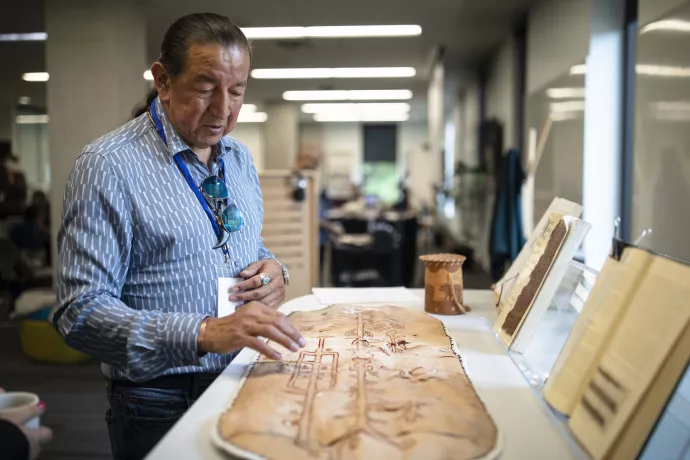
UTM hosts international workshop on birchbark
Birchbark is strong, water-resistant, and flexible. No wonder it’s been used for building, crafting, and writing material for ages and today is a primary material in many handicrafts and arts.
It’s why UTM Principal and U of T Vice President Alexandra Gillespie is hosting a global workshop on the significance and use of birchbark from Oct. 14 to 16.
The conference, Birchbark: An International Meeting, will feature researchers and artists from across the world including India, Pakistan and Ukraine, through a partnership with the Mississaugas of the Credit First Nation.
The workshop begins on Friday with opening remarks from Gillespie, UTM Indigenous Initiatives director Tee Duke, and Indigenous artist Philip Cote. From Friday to Sunday, topics of discussion are divided into four tables meeting at various times.
Birchbark has been used by Indigenous communities all over the world for millennia, including the Mississaugas of the Credit First Nation. A series of talks and discussions will not only highlight the importance of birchbark among Indigenous communities but will also look at how researchers study important artifacts and birchbark knowledge objects.
For example, the first table discussion on Friday will explore how birch trees and bark have carried meaning and messages around the world and share examples about the different names and meanings. It will include speakers Alan Ojiig Corbiere, Jonathan Ferrier, Ruth Phillips and Richard Salomon.
Further discussions across the weekend will examine how birchbark becomes a “knowledge object” and how different art is created before moving into issues of conservation and research. Researchers will discuss what they’ve learned through modern technology in the scientific study of birchbark.
Andrew Nelson of Western University's Anthropology Department will lead an interactive look of a recent micro-CT scan of a 16th century Kashmiri Śāradā birchbark codex, housed at Williams College in Massachusetts.
Earlier this year, U of T researchers examined a late 15-century liturgical book from France using micro-CT scanning – one of the technologies used in birchbark research. Gillepsie, who is also a professor of English and Medieval Studies, said it demonstrated how advanced technologies could reveal details of the book’s history and structure. If a book is too fragile to be opened, these scans can help uncover the text without risking damage by opening the book.
One of the major themes to be discussed near the end of the three-day workshop is the ethical responsibilities of accessing birchbark knowledge objects, like the codex, as many have been threatened, damaged, and/or decontextualized because of colonial violence and theft of antiquities.
